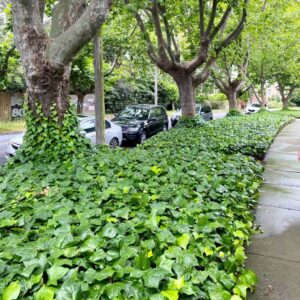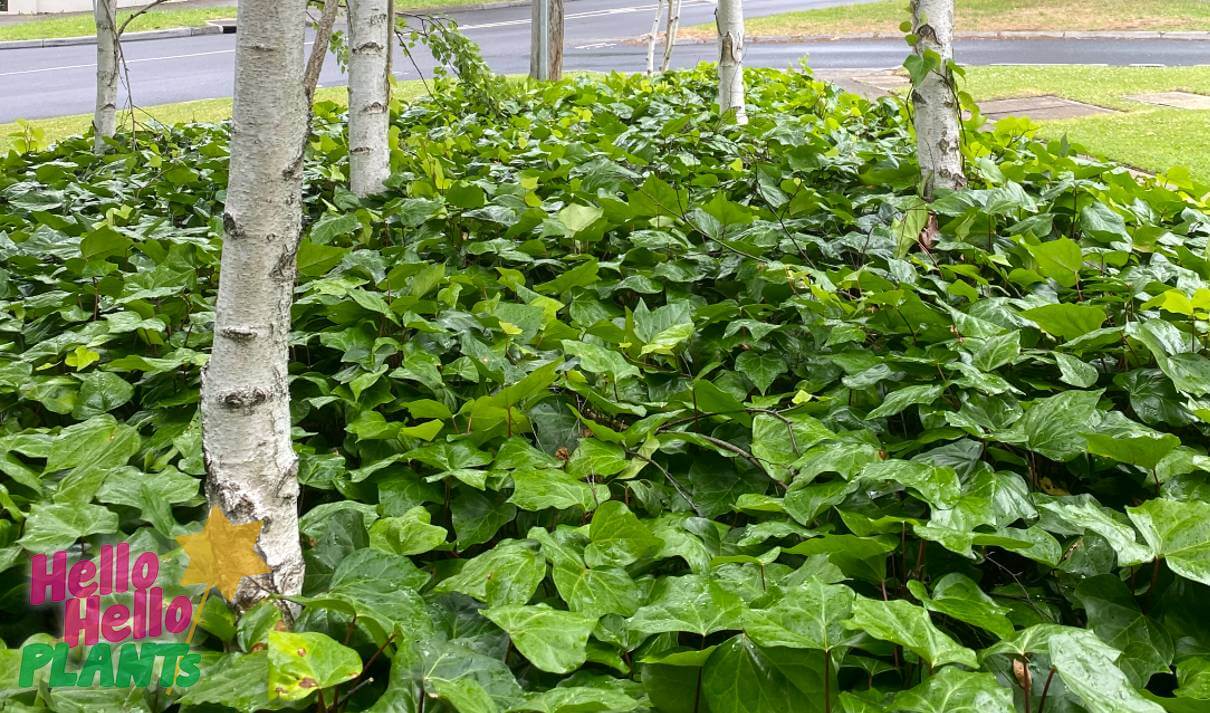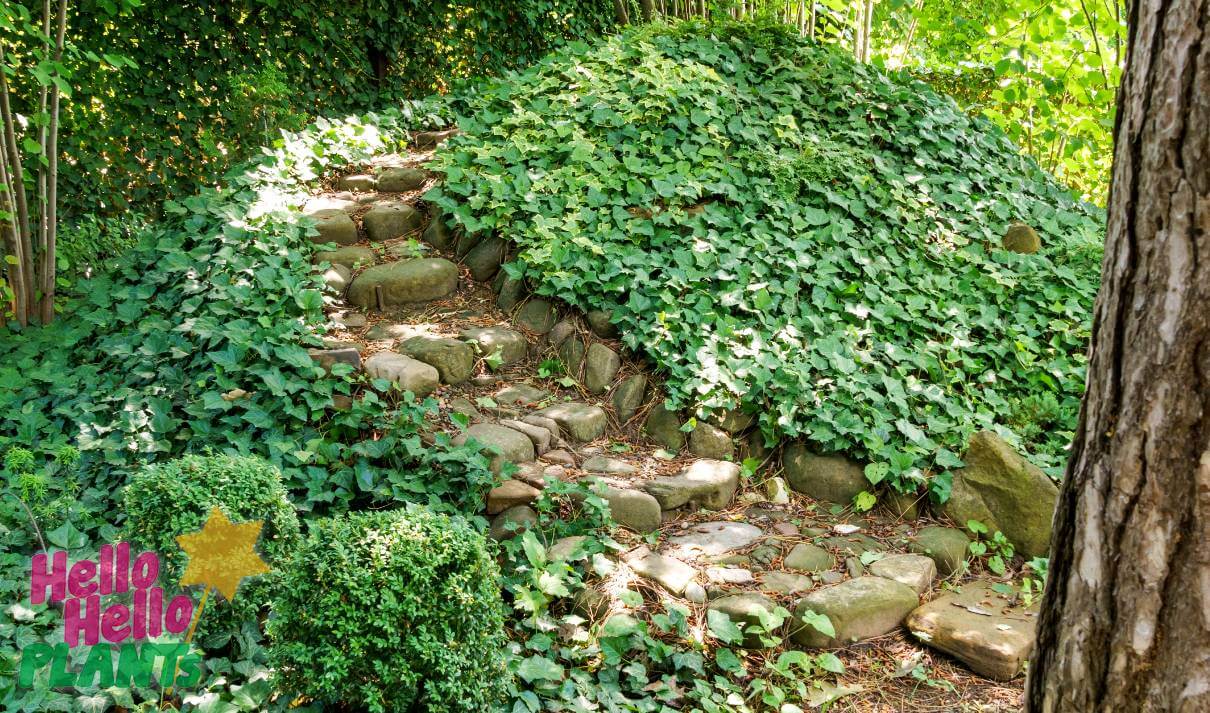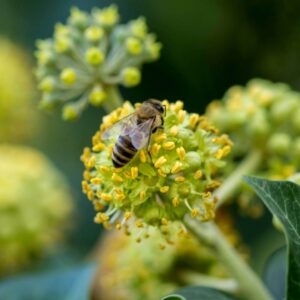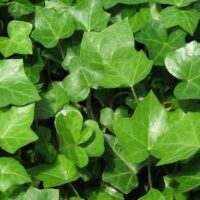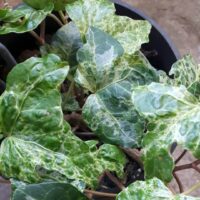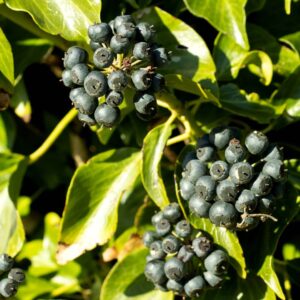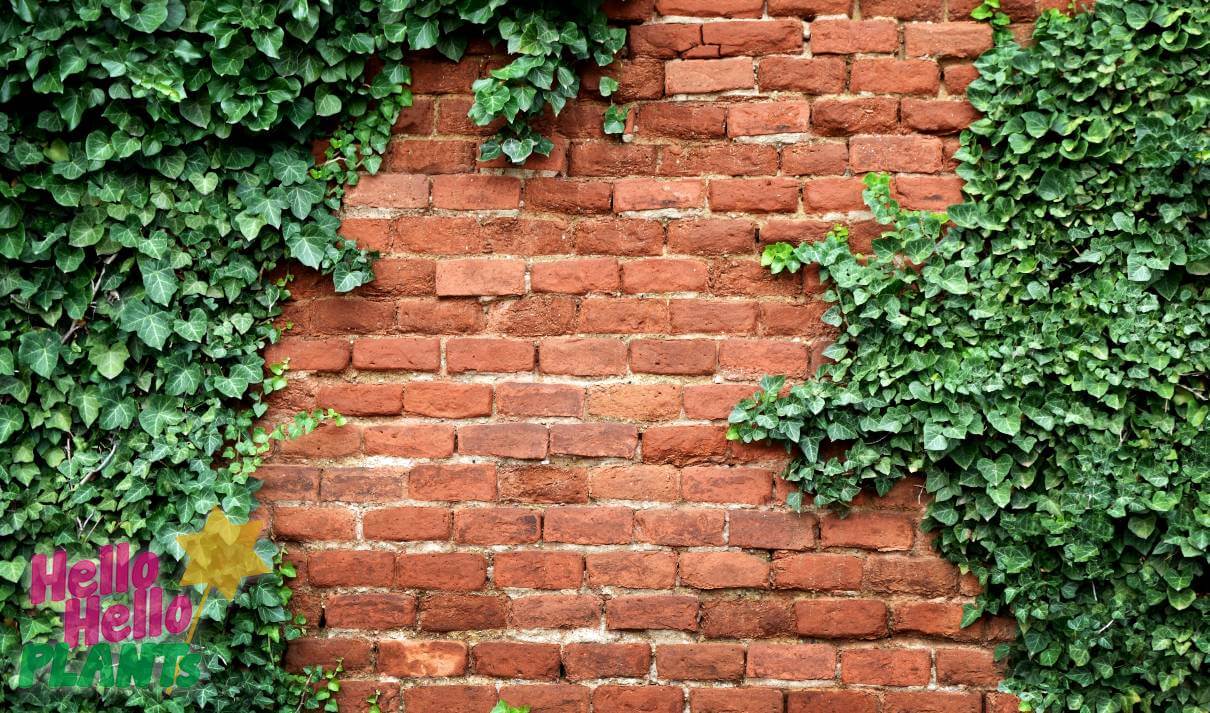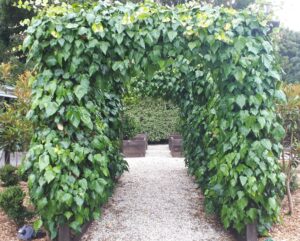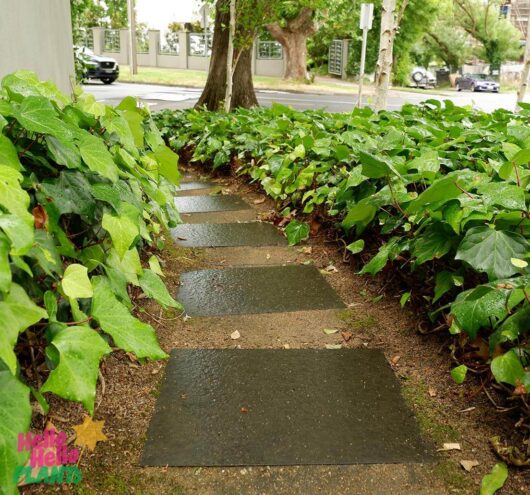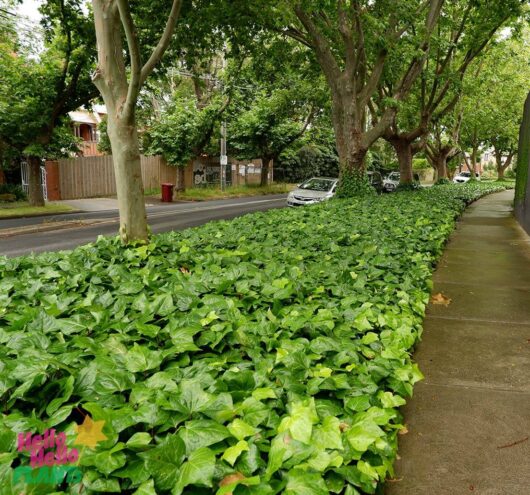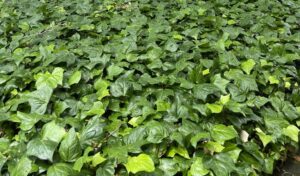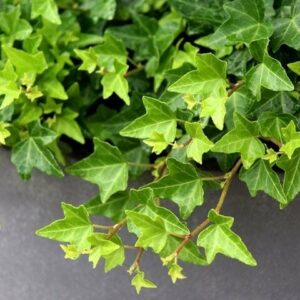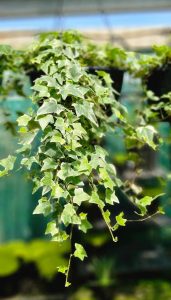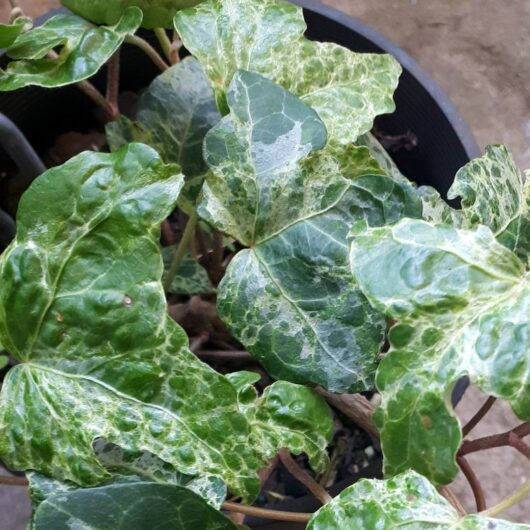Hedera are the plant family commonly known as ‘Ivy’. They are chosen for their versatility and elegant foliage. They feature broad, palmate green leaves. Palmate means leaves with lobes that stick out from a central point, like the fingers on a hand. In ivy’s case, their leaves have 3 prongs.
Ivy plants are creepers and climbers that are quick to cover whatever surface they are grown over. As Hedera are evergreen, they create very little mess, keeping a lush green look year round as a groundcover, wall covering or coverage for an archway.
Different types of ivy plants are often used as a lawn substitute as they outcompete weeds once established, grow to an even height and will grow in shaded areas where grass can’t. As a substitute hedge, Ivy covers the trellis or fence completely and evenly. Gardeners have even been known to create wall art using this vigorous climber, indoors and out! As they not only tolerate full sun but also full shade, hedera ivy plants were once the most popular indoor plant, grown in hanging baskets and trailing over bookcases,
These formal looking climbers can grow anywhere and almost on anything, so to keep them looking their best they will require regular trimming and training, particularly in the warmer months. If unchecked, Ivy is known to climb high up into a tree that is growing nearby and completely smother it! Or over your side of the fence AND the neighbours. So ivy is not for the zero maintenance garden by any means, but should not be discounted as a gorgeous garden feature.
In some regions, some varieties of Hedera are considered noxious weeds, so be sure to check with your local council as to what you can plant.
Plant Type: Climber
Uses: Groundcover, Climber, Archyway, Arbour, Wall Covering, Green Wall Art
Garden Types: Formal, Cottage, Hampton, Woodland, Lush & Leafy, Pots & Containers, Indoor, Poolside, Courtyard
Ivy (Hedera) Plant Care
Sun Requirements: Ivy thrives in full sun or part shade position.
Water Requirements: In hot climates, make sure an ivy is watered daily to maintain lush foliage, otherwise is self sufficient once established
Soil Requirements: Ivy tolerates most soil types including clay and sand. Prefers moist, well-drained loamy soil.
Fertilizing: Use an all purpose fertiliser such as Charlie Carp All Purpose or Osmocote Total All Purpose for ivy, during the spring and throughout the warmer months.
Pruning: Prune ivy when required. Hedera grows vigorously during the warmer months and in full sun so a monthly trim may be required.
Tolerances: Ivy tolerates drought, frost, poor soils and pollution.
Pests & Diseases: Mealy Bugs, Aphids, Whiteflies
Ivy (Hedera) Key Features
Flower: When ivy does flower, it puts out small greenish-yellow umbels that appear late summer or early autumn. Umbels are a flower cluster where stalks of nearly equal length spring from a common centre and form a flat or curved surface, like parsley flowers. Often rich in nectar and an important food source for bees.
Foliage: Palmate, five lobed or often heart-shaped, depending on the variety. Emerald to deep green. Some varieties are variegated white or yellow, around the edges or speckled.
Toxicity: Contains toxin called saponin, which can cause skin irritation. Berries can be toxic to humans, but the sap is actually used in modern day cough medicines.
Which Hedera To Choose?
There are several varieties of ivy, or Hedera, to choose from. Here’s a quick breakdown of each of these varieties.
English Ivy
With deep green foliage featuring yellow tinged veins, this classic ivy is hands down the most popular. Vigorous and versatile, English Ivy is used for everything from indoor hanging baskets and trailing down bookcases, to entirely covering an unsightly or dull wall, or even as a groundcover under a tree or shaded area.
Canary Island Ivy
Deeper green in colour with a glossy sheen, Canary Island Ivy is the more modern and yet sophisticated variety of ivy. It’s supple lime green new growth gradually fades to its deep, mature green. Suitable for lush and leafy, modern or formal gardens.Hello Hello! I love mass plantings of Canary Island Ivy or 'Canary Island Ivy lawns', as they are commonly called. The best thing about them is the large luscious foliage. With the new growth being light green and the old growth being a deep green, it reminds me of the lovely dappled effect you see in 'Monet' paintings. Canary Island Ivy lawns are a dramatic way to cover a nature strip or a small expanse, as they look amazing.
A note from Chris
When planted over a large expanse, you can dress up your ‘Ivy lawn’ by interplanting with trees such as Silver Birch or Japanese maple, an arrangement of box balls, or other topiary. These provide a beautiful feature in a Canary Island Ivy lawn.
Canary Ivy lawns are cheap and easy to establish. Plant 1 per meter or 2 per meter if you are in a hurry, and keep them well watered until established. Water and fertilize regularly to get fast cover.
Once you have a complete cover, they become one of the lowest maintenance landscapes available as they blanket out weeds, they have a very low water requirement, and you only have to trim around the edges with a brush cutter to stop them spreading onto paths etc. Try not to let them climb over trees.
Canary island lawns have some very valuable uses in landscapes:
- They are fast, easy, and cheap to establish, yet give you a luxurious million-dollar look
- They can be grown over rough, steep or difficult sites and make them look good
- They grow happily in sun and shade so they are perfect for a site that is partly sunny and partly shady, especially under trees
- They have very low water and maintenance requirement
Pittsburgh Ivy
Commonly mistaken for English Ivy, Pittsburgh Ivy features a slight difference in leaf size, having slightly smaller leaves than the common variety and a lighter green.
Variegated English Ivy
This ivy possesses variegated leaves with white edges, which make this ivy a popular indoor plant choice. The white, lacey look give this ivy a real edge!




